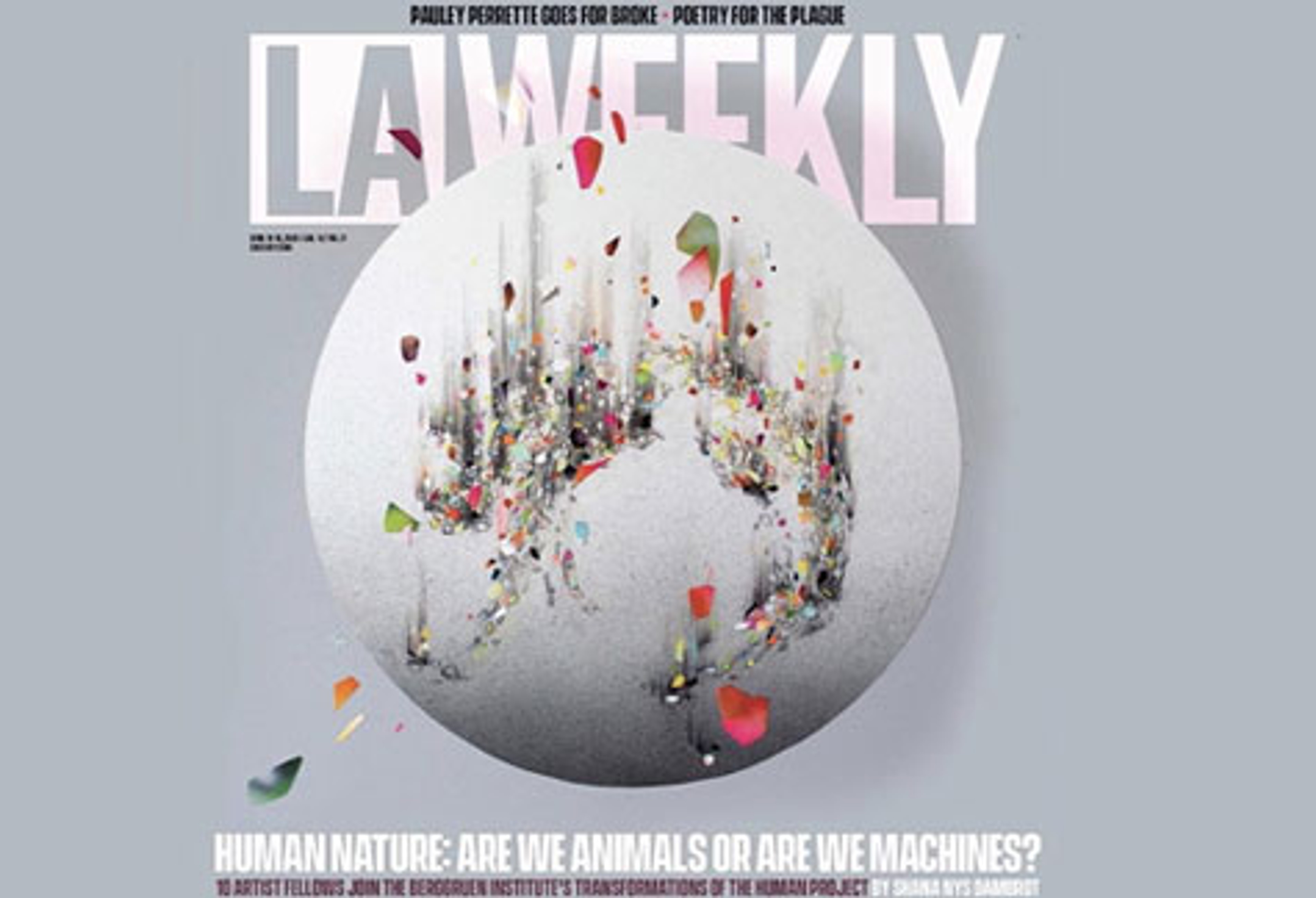Transformations of the Human (ToftH) Announces Its Inaugural Cohort of Artist Fellows in Conjunction with Frieze Art Fair

In this LA Weekly cover story author, Shana Nys Dambrot explores the Transformations of the Human program and how developments in fields such as AI, biotechnology, and climate change are changing our understanding of what it means to be human.
In February, ToftH convened a press launch announcing the inaugural cohort comprising its artist fellowship program. Its ten inaugural Artist Fellows are Nancy Baker Cahill, Ian Cheng, Stephanie Dinkins, Mara Eagle, Pierre Huyghe, Kahlil Joseph, Agnieszka Kurant, Rob Reynolds, Martine Syms, and Anicka Yi.
ToftH’s artist fellowship program is designed to place artists in AI and biotech labs. It has projects with and facilitates joint inquiries –– centered on art and engineering –– into how contemporary technology is challenging and changing the modern concept of the human as something more than nature and other than machine.
The program asks: what new, what unanticipated possibilities for imagining the human –– or for building AI systems or for designing new organisms –– emerge from AI and biotech? The underlying assumption of ToftH is that there are genuine philosophical and artistic challenges to a technology that creates new realities that defy the concepts and certainties that have structured everyday life up until now. Can we systematically identify these challenges and make philosophy and art part of engineering R&D? And R&D a source for new art projects? ToftH works with artist fellows to produce projects that address these questions for exhibitions, catalogues, installations, or performative events.
On February 15th, as part of Frieze Art Fair LA’s Conversations on Patronage series, ToftH presented a panel discussion entitled “The Iceberg and the Human” at the Sherry Lansing Theater at Paramount Pictures Studio. Speakers included Tobias Rees, Founding Director of the Transformations of the Human program; Rob Reynolds, a Los-Angeles based conceptual artist and ToftH Artist Fellow; and David Sutherland, the founder of Oceans & Ice Lab at the University of Oregon. The transdisciplinary presentation included exclusive footage taken by Reynolds of icebergs calving set to voiceover commentary from an Indigenous community member telling the history of the fields that the artist and scientist traversed. The panel encompassed visual art, AI, and climate science to ask: Could icebergs be experimental sites for reformulating our vocabulary for thinking about ourselves and experiencing the world around us?